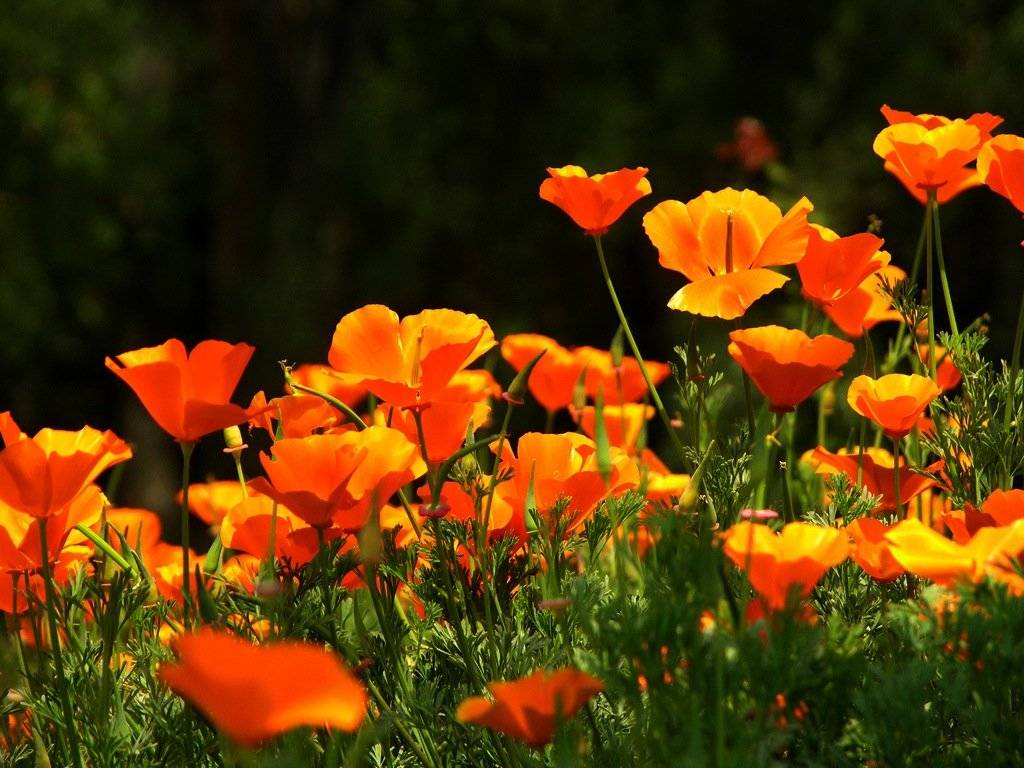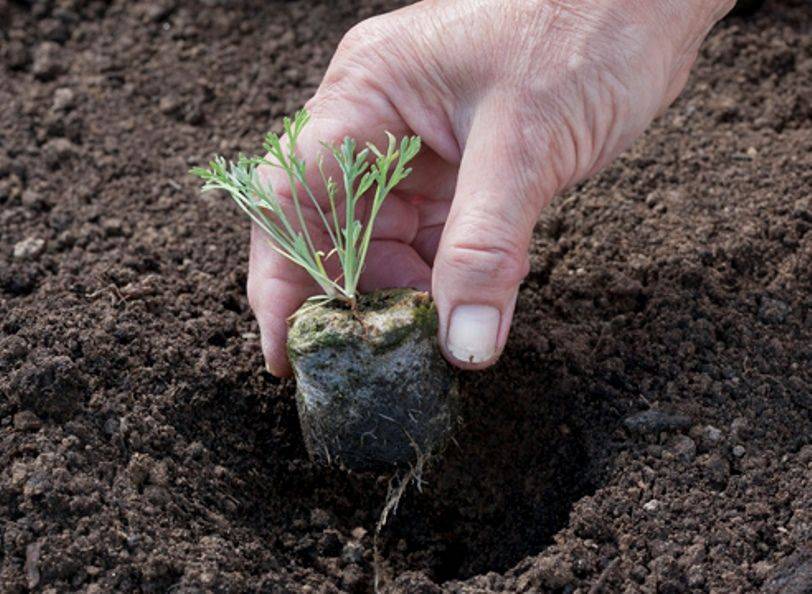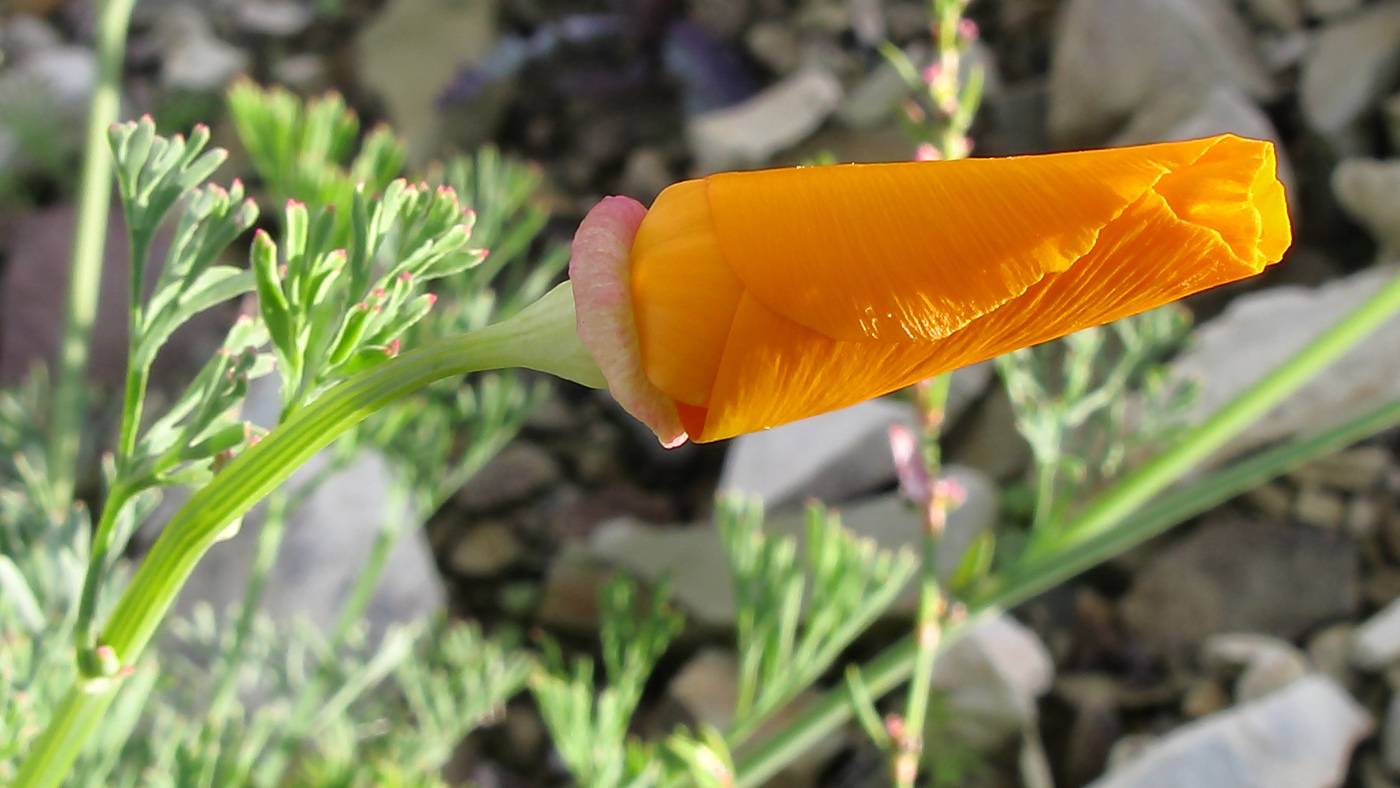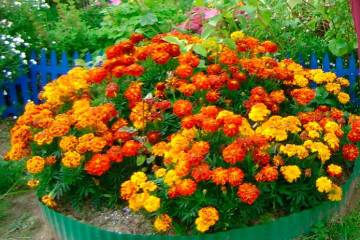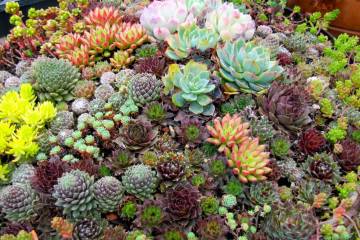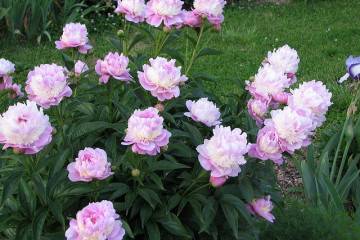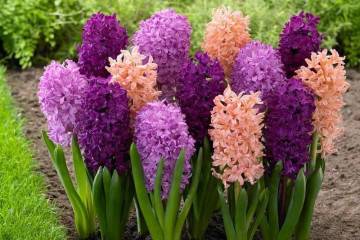Eschscholzia flowers - planting and care in the garden area
Content:
Eshsholzia is a flowering perennial that has won the love of gardeners in the Middle Lane. The shrub is famous for its ease of care and attractive appearance. You can grow it at home, it takes root well in pots on the balconies.
What does escholzia look like
An unpretentious herbaceous plant is gaining more and more popularity, decorating personal plots, loggias. Hybrid varieties differ not only in shades, but also in types of flowers.
What family does it belong to
Eschscholzia belongs to the small Poppy family, which includes about 10 plant species. In a natural environment, the flower can be found in North America.
History of appearance
There is a legend about gold miners, back in the 17th century. traveling in search of profit. They were delighted to see the glow on the California coast. But when they were on land, they realized that this is an illusion created by the many petals of a flowering plant. Since then, thanks to this unusual description, Escholzia has been called the "golden cup".
Plant characteristics
Escholzia has delicate small leaves, which makes it look like wormwood. Flowers are small, single. They bloom only in sunny, clear weather. They are closed at night and during rain.
Classification of types of escholtia
The most popular among gardeners is turfy escholzia, other species in summer cottages are much less common.
Lobba
Eshsholzia Lobba is an annual plant with pointed leaves. Petals are yellow with subtle orange specks. In diameter, they reach an average of 10 cm, in the wild they can grow up to 20 cm.
Soddy
The flowers of the soddy escholzia have a richer color. They appear in June and continue to delight the eye until the onset of frost. The flowers are large, up to 30 cm in diameter. Thin leaves are dissected, covered with wax, have a bluish bloom.
California
Californian escholzia is a herbaceous shrub with small flowers. But their shades can be varied: white, yellow, orange, cream. The height of the bush itself does not exceed 40 cm.
Popular varieties
Decorative hybrid varieties of escholzia are in great demand. They differ in shades of flowers, their shape.
Apple blossom
This escholzia has double flowers that grow up to 6 cm in diameter. They are characterized by a delicate silvery pink color. Under comfortable conditions, flowering begins in June and ends with the arrival of cold weather.
Chiffon
Chiffon pleases with a variety of shades. All flowers are different from each other, they can be pink, white, red, yellow, orange. Even one bud combines several colors. The petals have an unusual texture, their edges resemble corrugated paper.
Ballerina mix
From a mixture of seeds, exclusively double flowers grow. They are small, about 6-8 cm in diameter. The leaf plates are covered with a waxy coating. The flowers are colored deep yellow, bright orange or pale pink.
Mikado
Mikado is a plant variety with simple solid colors. They are red-orange with a yellowish spot in the center.
Peach sorbet
This escholzia is distinguished by its soft cream color. All flowers are monochromatic, densely doubled.
Strawberry fields
Representatives of the variety resemble poppies more than other escholzia. The petals are bright red, in the center the color turns yellow.
How escholzia reproduces
Escholzia flower is propagated by seeds. It is recommended to immediately place the planting material in open ground. The root system of the plant develops rapidly, spreading deep into the ground.
Growing from seeds
It is not difficult to propagate a herbaceous shrub, the main thing is to follow the recommendations, choose the right place, and use a suitable soil.
Time to board
When to start planting a plant, each gardener decides for himself:
- blooming escholzia will delight the eye throughout the summer when planting in open ground is carried out in the fall. If you start the process before the onset of frost, then in the spring there will be already strengthened and hardened plants. All that remains is to thin them out;
- when planting in spring, it is planned for April. Until then, seeds should be stored in a cool place. You can keep them on the bottom shelf in the refrigerator.
When growing Echscholzia from seed, when to plant for seedlings depends on the planned date of transplanting outdoors. Already matured plants are transplanted, 2-3 weeks before that they need to start hardening, moving them for several hours to a cool place. Then young shrubs will easily tolerate a drop in outdoor temperature to -5 ° C.
Choice of capacity
Given that the roots of Escholzia are growing rapidly, separate containers must be chosen for planting seedlings:
- Take a peat pot or buy a pill that swells in water. It is placed in a plastic glass, watered, then the remaining liquid is removed. The landing site is ready. When using a glass of peat, I pour loose, slightly acidic or neutral soil into it.
- One seed is placed in the selected container.
Soil and seed preparation
Before planting, the seeds are recommended to be treated with a growth-stimulating solution and mixed with sand. They retain their germination capacity for three years.
Sowing is necessary in a soil suitable for escholzia. It must meet the following characteristics:
- sandy and dry;
- slightly acidic or neutral;
- well drained.
Seedling care
In order for the escholzia to bloom by summer, the seedlings, the cultivation of which begins at home, must first be in a greenhouse. It is covered with foil or glass, sometimes airing and spraying the soil. After two weeks, the first shoots appear. Then they need to be opened for a short time, after 14 days, start applying mineral fertilizers.
Dive and transfer
Plants are recommended to be grown in separate containers, which avoids the diving procedure.
Seed collection
Perennial escholzia reproduces by self-seeding. There is no need to take additional steps. If you want to collect the seed yourself, you need to follow the step-by-step instructions:
- Cut the ripe seed box from the plant. It forms about a month after flowering ends. It should be dark. To speed up the process, you can put a gauze bag on the shrub after it has faded.
- Place the box in the room to dry.
- After the seeds are ripe, collect them and put them in the refrigerator for storage. You can sow them already in April.
Features of care in the garden
The landing and subsequent care of the escholzia cannot be called time consuming and cumbersome. The plant is completely non-capricious and unpretentious, problems with it are extremely rare.
Comfortable conditions
Eshsholzia is a thermophilic shrub that prefers loose and dry soil. It should not be planted in low-lying areas where there is a risk of moisture accumulation, which can lead to root rot. Drafts do not pose a threat to him, so you can plant in an open area.
What is the plant afraid of
Excessive moisture can be detrimental to escholzia. It is important to drain the soil before planting so that water does not stagnate at the roots.
Watering
Eschsholzia is indifferent to watering. If it grows outdoors, it has enough moisture from the rain. In dry summers, it is required to water the shrubs, after checking the soil, it must be dry. The procedure should be carried out in the evening, when the flowers have already closed.
Mulching
Eschsholzia is mulched in the fall after planting in open ground. To do this, use fallen dry foliage. Such a shelter will promote early and abundant flowering in the next season.
Loosening
Eschsholzia needs loose soil. Periodically, you need to get rid of weeds and provide oxygen to the roots of the plant. In this case, you need to act carefully so as not to harm the shrub.
Top dressing
You need to apply fertilizer before the plant begins to bloom. Organic fertilizing should not be used, they can lead to death. But complex mineral fertilizers containing phosphorus, potassium and nitrogen will help to build up green mass and ensure lush flowering.
Transfer
Novice gardeners are interested in whether it is worth replanting Escholzia, and whether it can be done at all. Experts do not recommend disturbing the plant again, so as not to injure the roots and delicate shoots.
When and how it blooms
Eschsholzia, whose flowers bloom every year, will decorate any flower bed, transform the balcony. The variety of hybrid varieties allows you to create unique bright or delicate compositions.
Types of flowers
Flowers are double or simple. Their shades are also different. Most often they are yellow, orange or pink. Some hybrid varieties are unevenly colored. So, several shades can be combined on one flower.
Flower shapes
Escholzia flowers resemble small bowls. Terry buds look like marigolds, ordinary ones are often compared to poppies. In the evening they close, collecting petals, in the morning they bloom, meeting the bright sun.
Flowering period
Under favorable conditions, the flowering period lasts from June to cold weather. If the plant is planted outdoors in the current season, the buds will appear a little later. When sowing was carried out in the fall, flowers are formed already at the end of spring.
Leaving during flowering
You do not need to fertilize Escholtia during flowering. Watering is required as the soil dries up, depending on weather conditions. Once the buds wilt, they need to be removed to extend the bright period. After the shrub has completely bloomed, it is pruned, which promotes the growth of new young shoots.
Growing problems
Eschsholzia can suffer from various diseases and the actions of parasites. The sooner you start to fight them, the less the plant will suffer.
Pests
Bean aphids and spider mites sometimes settle on the leaves of Escholzia. Insecticides help to defeat them.
Diseases
The most common problems when growing escholzia:
- rot. Appears with excessive moisture. It is necessary to get rid of the affected parts of the plant and revise the watering regime;
- powdery mildew. The flower is also affected by high humidity, an excess of nitrogen in the soil. Weakened immunity reduces resistance to disease. A light fluffy bloom appears on the leaves, which gradually darkens. Lack of treatment can lead to the death of the plant.
Signs of improper care
The following symptoms indicate a bush disease:
- escholzia stops blooming or the buds do not open even in sunny weather;
- leaves turn yellow, their tips dry;
- plaque or spots appear on the leaf plates.
It is necessary to find out as soon as possible why escholzia is losing its decorative effect in order to take measures and save it.
Use in landscape design
California poppy is widely used to decorate personal plots, parks, squares:
- planted in flower beds along with the same type of flowering plants;
- draw up curbs;
- placed on alpine hills among stones, ornamental deciduous shrubs are planted between them.
Escholzia, the cultivation of which does not cause problems, is used to create flower arrangements, small bouquets. Bright flowers add decorative effect to flower beds and lawns. The main thing is to provide the plant with loose and dry soil, to avoid waterlogging.
